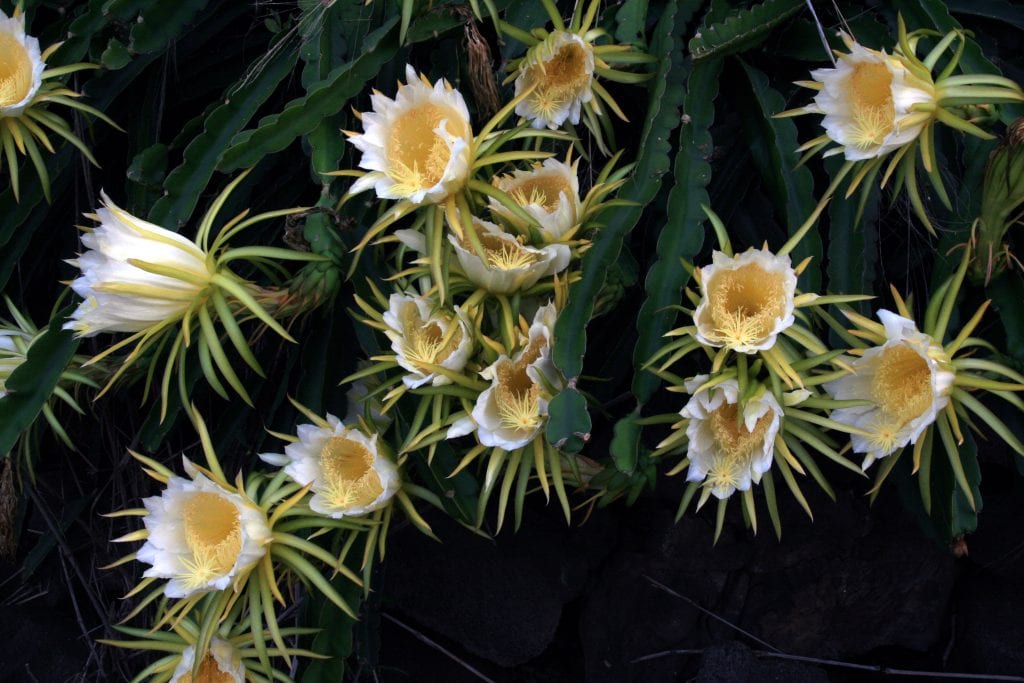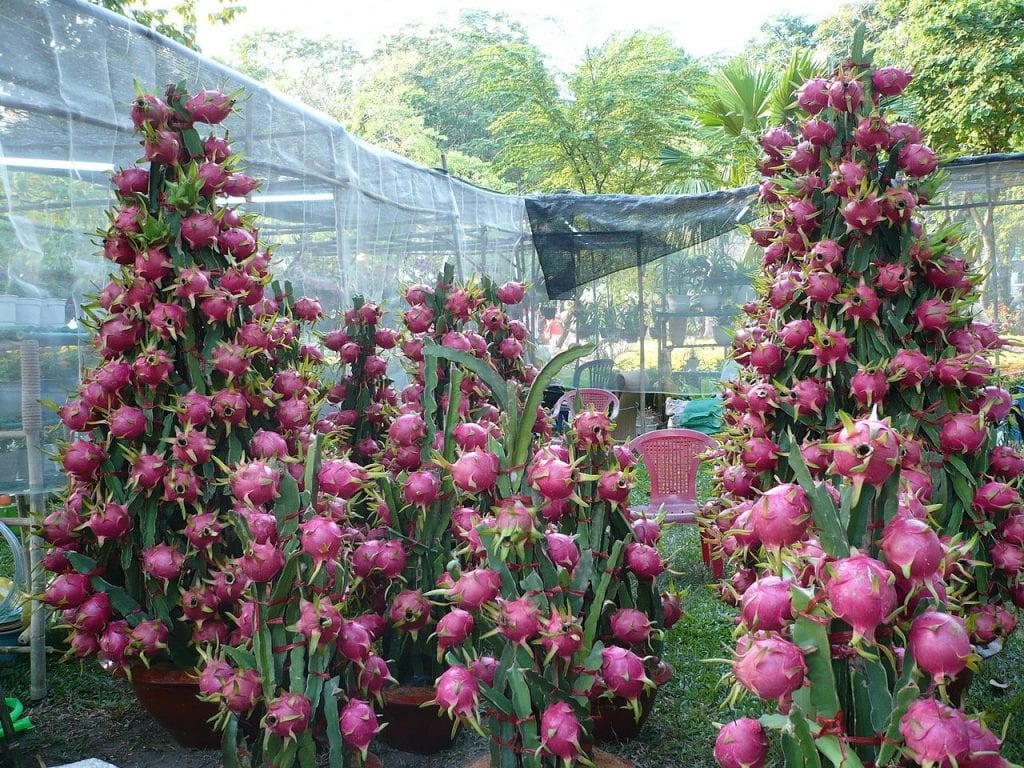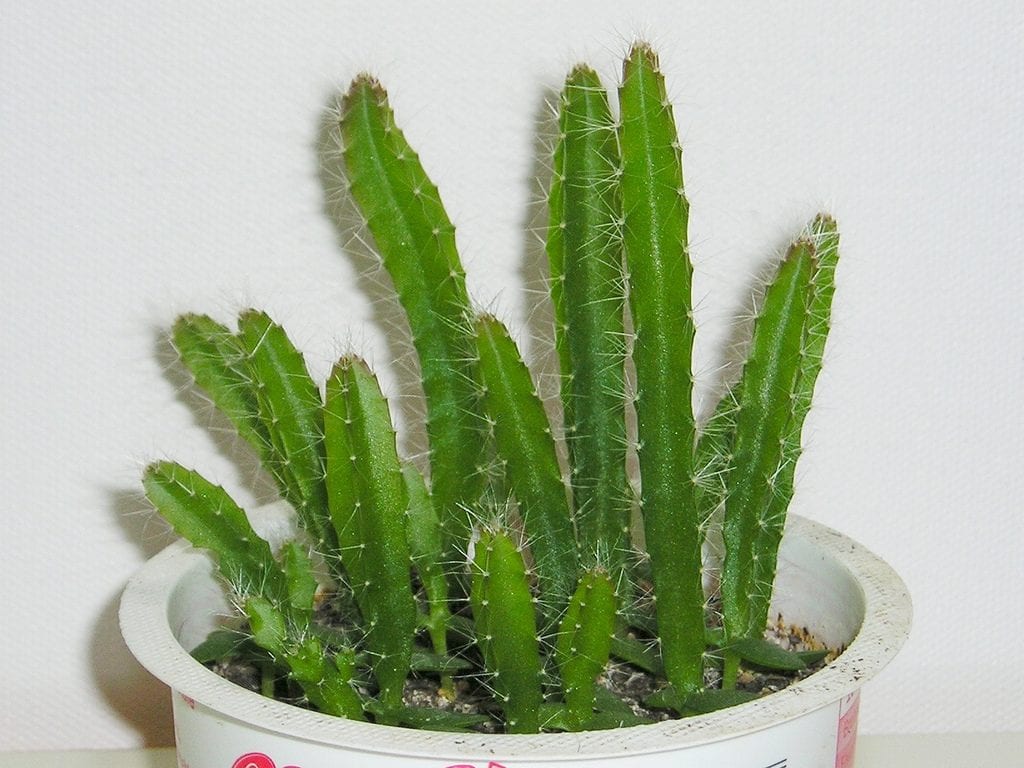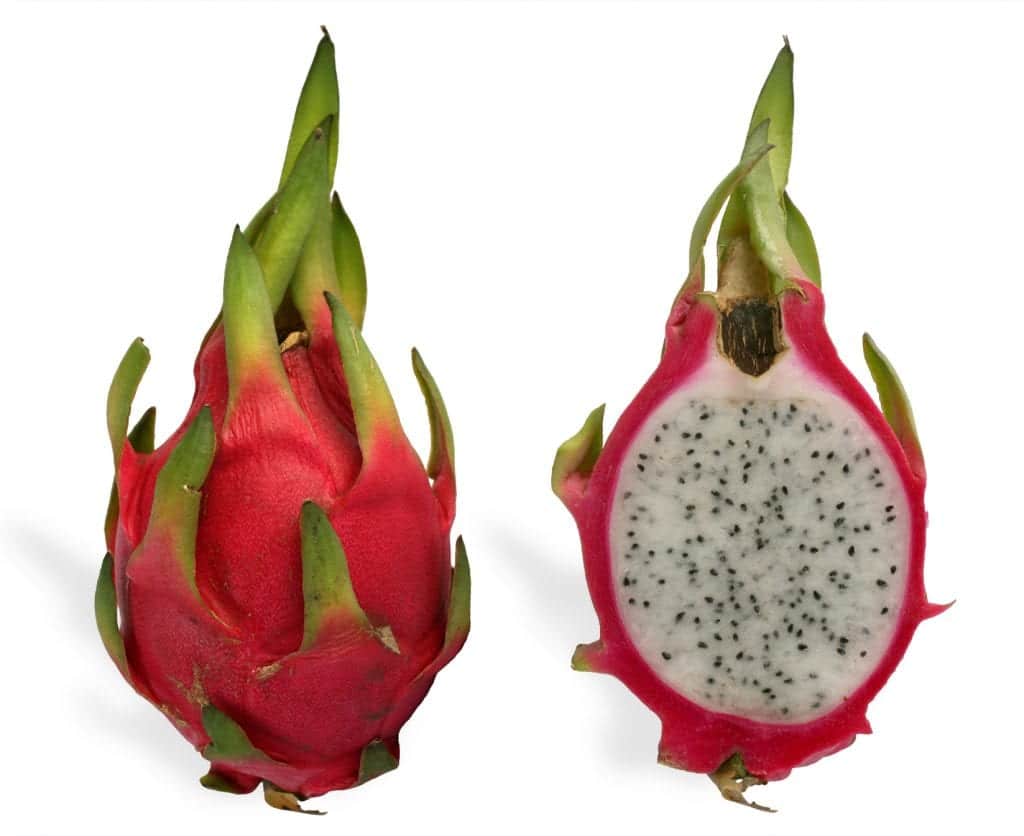
Who wouldn't want to taste some delicious cactus fruits? You may have already had the opportunity to try the prickly pear (Opuntia ficus-indica), but what if I told you that there are others that are even better? They are those of the Hylocereus undatus, a species much better known as pitahaya.
Its flowers are wonderful: big and white. In addition, its care is not complicated at all. Learn more about this interesting plant.
Origin and characteristics

Our protagonist is a native cactus from Central America whose current scientific name (since 2017) is Selenicereus undatus (before it was Hylocereus undatus). It is popularly known as pitahaya, dragon's mouth, beef jerky.
It is characterized by developing stems of dark green color, creeping and climbing habit that branch a lot. Each segment can measure 1,20m and each stem reaches a length of up to 10m and a thickness of 10-12cm. It has 3 ribs, with wavy margins. The areolas measure 2mm in diameter, with between 1-4cm internodes. The spines emerge from them, at first very short and white, and then, as it grows, they turn grayish or black and are 2 to 4mm long.
The flowers are white, measuring 25 to 30cm long by 15 to 17cm in diameter. They are fragrant and nocturnal. They last only one night. The fruit is a berry up to 7-14cm long by 5-9cm wide, with yellow or red epicarp and pulp of a mucilaginous, white or red consistency. Inside we will find many tiny shiny black seeds.
What are their cares?
If you want to get a copy, we recommend providing the following care:
Location
Place your pitahaya outside, in semi-shade. Make sure that the place where you want to put it receives more light than shade, otherwise it will not grow well.
Earth
- Flower pot: you can use universal growing medium (you can get it here) mixed with perlite (you will find it here) in equal parts.
- Garden: it must be fertile and with good drainage.
Irrigation
You have to water 2-3 times a week in summer and every 6-10 days the rest of the year. During the winter, in the case of frosts, space the waterings more.
Subscriber
It is very important fertilize in spring and summer with organic fertilizers, like guano for example, which is very fast effective and rich in nutrients. You just have to keep in mind that if it is in a pot you should use fertilizers in liquid form so as not to hinder the water drainage.
Multiplication

It can be multiplied by seeds and cuttings. Let us know how to proceed in each case:
Seeds
To sow your seeds you have to follow this step by step:
- First, you have to buy them during the spring.
- Then, a pot is filled in a plastic pot with holes with universal growing substrate mixed with perlite in equal parts.
- Then it is watered.
- Next, the seeds are spread on the surface, trying to avoid clumps forming.
- Finally, they are covered with a very thin layer of substrate, and watered with a sprayer.
If everything goes fine, will germinate in 7-10 days.
Cuttings
The fastest way to get new specimens is by multiplying it with cuttings in spring. For it, proceed as follows:
- First, a healthy segment is cut with a razor previously disinfected with pharmacy alcohol.
- Then the cut is allowed to dry for a week.
- After that time, a pot is filled with vermiculite (you can get it here) and watered.
- Then a shallow hole is made in the center, and the cutting is planted.
- Finally, the pot is finished filling.
For an even greater chance of success, we recommend impregnating the base of the cutting with homemade rooting agents before planting it. But it is not something that is very necessary. Will root in 2-3 weeks.
Rusticity
The pitahaya can be grown outdoors all year round if the climate is warm tropical or warm Mediterranean. The minimum temperature it supports is -2ºC as long as they are punctual, of short duration and that is also protected.
What uses does it have?

Ornamental
It is a very decorative plant, especially when it is in flower. You can have it in a pot, or in the garden guiding it to develop on a lattice. In either case it will be phenomenal.
Culinary
The fruits are edible, sweet in taste. They have a high water content, so they are also refreshing. They can be consumed raw, or made juices, liqueurs, jellies, jams, etc.
Its nutritional value per 100g is as follows:
- Water: 84,40%
- Calories: 54kcal.
- Carbohydrates: 13,20g
- Proteins: 1,40g
- Fat: 0,40g
- Fiber: 0,5g
- Vitamin B1: 0,04mg
- Vitamin B2: 0,04mg
- Vitamin B3: 0,30mg
- Vitamin C: 8mg
- Calcium: 10mg
- Iron: 1,30mg
- Phosphorus: 26mg
Medicinal
Pitahaya can be used to relieve symptoms of gastritis and gastric ulcers, as well as as a healing and stimulant. It is also an essential fruit for those who suffer from constipation or who have cholesterol.
Where to buy?
You can get your copy in nurseries and garden stores, both physically and online. The lowest price I have seen is 1 euro for an unrooted cutting and the highest 20 euros for an adult plant that is already bearing fruit.

What did you think of the pitahaya?
Sensational!!!
In this week I will have some seeds ... I will tell you if next spring is a success
I hope so ...
We hope so 🙂
If you have doubts, we will be here.
very interesting. I like
Hi Gertru.
Perfect, thank you very much for commenting.
Regards!